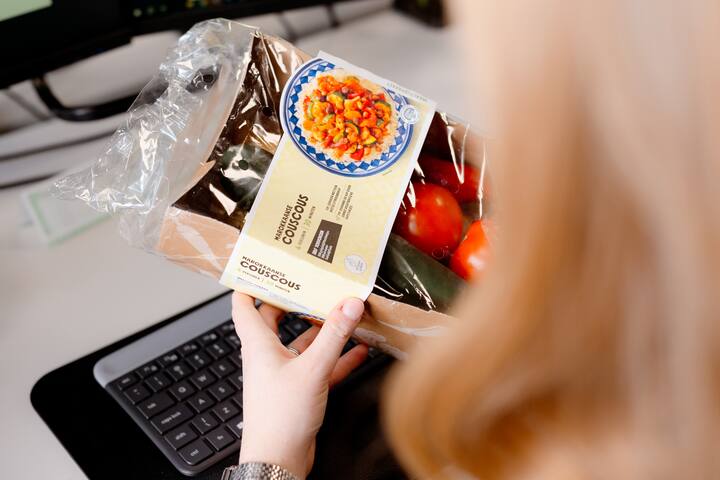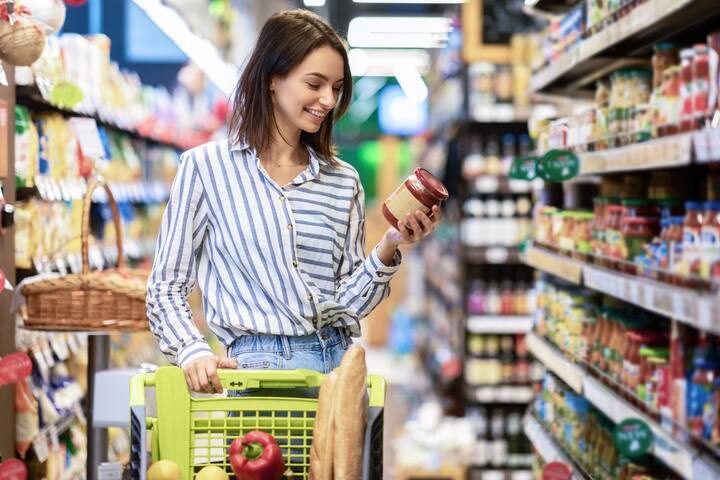
Labelling & legislation: 3 pitfalls for food producers
Creating a good label for a food product is often trickier than it seems. With all the rules and exceptions, it quickly feels like you have to find your way through a maze of legislation. The basis lies in Regulation (EU) No 1169/2011 - which tells what all you have to mention on your packaging if you sell your product in Europe. But it doesn't stop there. Depending on the product you are marketing, all sorts of additional rules may apply.
At Normec Foodcare, we have a separate department with Labelling Specialists who work daily on, among other things, label checks and solving labelling and legislative issues. In practice, we see that things still regularly go wrong and labels - usually unconsciously - do not comply with legislation. Labelling is precision work and a mistake is easy to make. In this article, we take you through the biggest pitfalls in food labelling so that you, as a producer, marketer or quality manager, can avoid these mistakes.
1. Knowledge of appropriate legislation
A common pitfall in food labelling is insufficient knowledge of exactly which legislation applies to your product. While Regulation (EU) No 1169/2011 provides the basis for labelling in Europe, additional rules may apply depending on what you make or sell - and these may differ from product to product and country to country.
There are two types of legislation you need to consider. First, there is horizontal legislation: these are rules that apply to all foods, such as those on additives, flavourings, nutrition and health claims. For example, think about which E numbers are allowed in a certain product group and when you can call a flavouring “natural”.
There is also vertical legislation, which focuses precisely on specific product groups such as chocolate, meat or food supplements. For instance, the labelling requirements for food supplements are not the same as for other food products.
Besides European legislation, there are also national regulations, which differ from country to country. What is allowed in the Netherlands may be slightly different in Belgium or Germany - for example, in terms of language or permitted ingredients or wording. In the Netherlands, for instance, it is laid down by law when you can and must call bread “wholemeal”. This legislation does not apply to other countries in Europe. So don't forget to always check whether country-specific rules also apply to your product, especially if you export.

2. Translations
Compulsory indications and claims on the label shall be expressed in the language understandable to consumers in the Member State where the product is sold. Member States may impose requirements on the language used on labelling in their territory. Therefore, if you market products in different countries, you must also translate the labels. A pitfall here is translating labels without paying attention to legislation and nuances of language and culture. It may seem easy to translate a label from Dutch into English, German or French, but a direct translation is often not enough. A number of legal texts are laid down verbatim in the various language versions of Regulation (EU) No 1169/2011, but also in other regulations. Consider, for example, nutritional values and additive designations. An online translation engine would translate the category name “acid” into Dutch as “zuur”, while the correct legal name is “voedingszuur”.
Language differences can also lead to consumer confusion or even deception. Think, for example, of designations that may have different meanings in different languages. Or designations that are understandable in one country but unclear or incorrect in another. For example, if a common name such as “bitterbal” or “ontbijkoek” is translated literally, the name will not be clear in other countries. Do you import or export outside Europe? Then be aware that different labelling rules apply outside Europe and just translating the label is not enough. First, the label will have to be prepared according to the applicable legislation. In the US, for example, the nutrition table is drawn up differently and the amount of carbohydrates is calculated differently. Therefore, the nutrition table cannot be reproduced verbatim for products marketed in Europe.
3. Misleading the consumer
Another pitfall in food labelling is misleading consumers. According to Regulation (EU) No 1169/2011, food information must not be misleading, ambiguous or confusing. In addition to these legal provisions, deception can also cause loss of consumer confidence. It is therefore essential that labels are always transparent and accurate so that consumers do not have false expectations and can make an informed choice. Misleading consumers can happen through the use of unclear or misleading claims, images or terms on the label. For example, a product may be called "natural" when it actually contains artificial ingredients. Or a picture may be shown of an ingredient while the product does not contain that ingredient or contains very little.
Specific legislation has been drawn up for nutrition or health claims on food. These claims must comply with Regulation (EU) No 1924/2006, the so-called Claims Regulation. This stipulates what you have to comply with to be allowed to make a claim such as ‘sugar-free’, ‘high-fibre’ or ‘vitamin C supports the immune system’. If you want to make a claim, first check whether your product meets the general conditions for making a claim. Then check whether legislation is in place for the claim in question and whether your claim complies with it. Make sure you can properly substantiate the claim and that the correct wording has been used.

Ask your labelling question
In this article, we have listed some common pitfalls in food labelling. As a business, it is essential to stay abreast of the rules and regulations that apply to the labelling of your products so that you comply with the law and avoid misleading consumers. Do you have a labelling question of your own or run into a specific problem? Our team of Labelling Specialists is ready to help you with expert advice, so you can ensure correct, honest information on your products.
Need help with labelling?
More about Normec Label & Specifications

Normec Label & Specifications
's-Hertogenbosch Netherlands